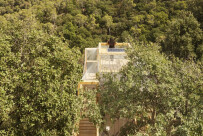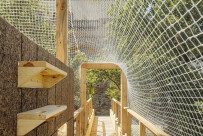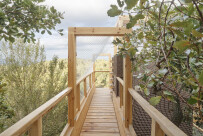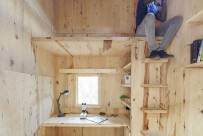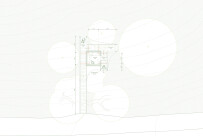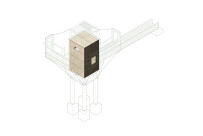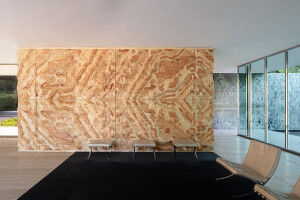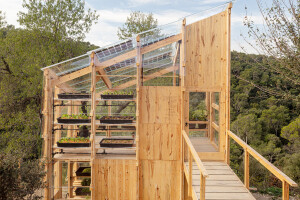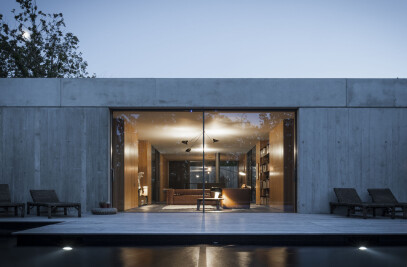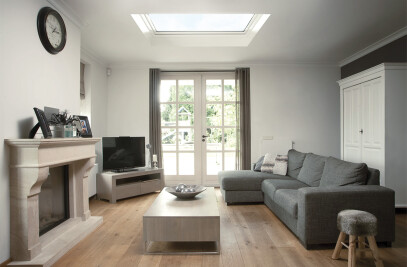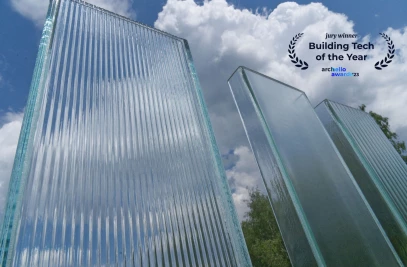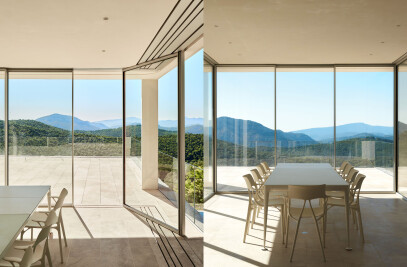A team of students and researchers have built the Forest Lab for Observational Research and Analysis (FLORA) in the Parc Natural de Collserola (Collserola Natural Park), an extensive green space in Barcelona’s metropolitan area. A mass timber structure, FLORA is an observatory from which the park's forest canopy can be studied. Moreover, its use can be adapted to any forest in the world.
FLORA is the project of a cohort of students undertaking the Masters in Advanced Ecological Buildings and Biocities (MAEBB) at IAAC (Institute for Advanced Architecture of Catalonia). This immersive degree program focuses on designing and constructing a new generation of buildings and cities that respond to the planet’s emerging climate challenges. It takes place at Valldaura Labs in Barcelona, a research center on a historic 130 hectare farm in the Collserola Natural Park.
Standing at just over 8.5 meters tall, FLORA was made with invasive pine trees sourced from the park, by means of rigorous sustainable forest management and traceability procedures. From its initial construction to end use, FLORA was built as part of a “zero-kilometer” philosophy. Seventy trees were felled by the students, who then created cross-laminated timber (CLT) panels, glulam (glued laminated timber) beams, and solid wood elements, using a sawmill and CLT press at Valldaura Labs.
FLORA consists of a CLT core resting on four glulam timber columns that measure 30 x 30 cm. The bridges are made from glulam — the longest bridge (the entryway) spans approximately 12 meters. “These components were all individually made and then assembled using a crane in a highly intricate installation sequence,” explains IAAC. “The CLT structure is protected by two layers of natural cork panels, providing thermal and acoustic insulation.”
A net surrounding the structure draws inspiration from a hunter’s nest. It was designed digitally by the students and then woven by hand. IAAC describes the net’s purpose as: “[a way to] better camouflage the project by allowing plants to spread along it, thus further blending the structure with the forest in order to hide it from the surrounding wildlife.”
FLORA will house a researcher for a short period of time who will study the biodiversity of the 8,000 hectare Collserola Natural Park, in particular the impact of climate change on the surrounding environment. A functional research facility, amenities include a bird radio, bird houses, working and projection space, and birdwatching spaces. “The project seeks to be immersed within nature and to create an ecological interactive prototype,” says IAAC.
FLORA is inspired by the work of the American biologist and ecologist Margaret D. Lowman, known as the "mother of canopy research.” Lowman is an expert in canopy ecology and constructing canopy walkways. “The forest canopy is the habitat formed by the treetops and is where a great diversity of animals tend to live,” explains IAAC. “These canopies protect the forest floor by intercepting and assisting the percolation of 60-90% of rain or snow water into the soil.”
A “scientific research facility to study the forest canopy,” FLORA is an important mechanism for understanding how to mitigate climate change.















